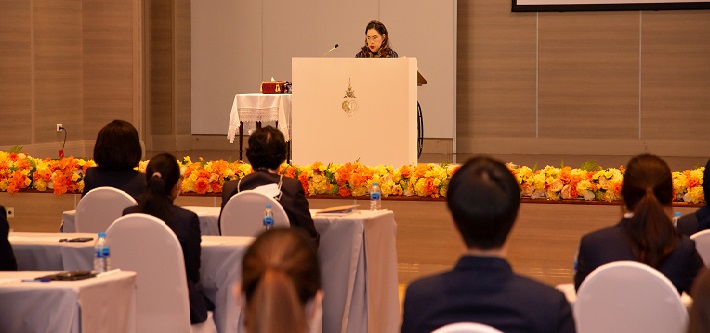Professor Dr. Her Royal Highness Princess Chulabhorn Krom Phra Srisavangavadhana graciously went to deliver the first instalment of the special lecture series on the formation of cancer to students of Chulabhorn Graduate Institute.
On Wednesday 26 February 2025 at 12:37 PM, Professor Dr. Her Royal Highness Princess Chulabhorn Krom Phra Srisavangavadhana graciously went to the main auditorium on level 2 of the Chulabhorn Graduate Institute building, in Lak Si district. Her Royal Highness kindly delivered a lecture to the faculty members, researchers, and Master’s degree and doctoral students of Chulabhorn Graduate Institute, who included first-year and second-year students of the Applied Biological Sciences: Environmental Health Program and the Environmental Toxicology Program. The lecture covers the “Principles of Toxicology” curriculum on “Oncogenesis”. Oncogenesis is an important subject, because cancer is the first leading cause of death in Thailand and its causative potency is likely to increase. The most common types of cancer in Thailand include liver cancer, Cholangiocarcinoma, and lung cancer, which have the highest prevalence and death rates in the world. These most common types of cancer are not simply genetically caused but are also related to risk factors such as the environment and the way of life, as well as exposure to chemicals, oncogenic viruses, and radioactivity.
The title of Her Royal Highness’s lecture today is “The process and stages of the formation of cancer and the biology of cancer cells”. The formation of cancer involves primary, formative and distributive stages, which are highly complex. Her Royal Highness graciously cited the carcinogens that directly cause DNA damage, such as aflatoxin, which is produced by fungi found in cereals, and nitrosamines found in food such as fermented fish and shrimp paste. The abnormal cells in a cancer tumor at its formative stage are located where a cancer will eventually be formed. If they are detected at an early stage, they are likely to be curable. If the abnormal cells are left to grow until the cancer cells intrude into the neighboring areas and are further distributed through the vascular system and lymphatic vessels to the tissues and other organs, they may become a major cause of death.
In the concluding part of her lecture, Her Royal High provided a basic knowledge on the biology of cancer cells, including their sustained proliferation and existence, protein transformation, and transformation of the immune system. In touching upon these themes, she cited examples to make the subject-matter more accessible.
ศาสตราจารย์ ดร. สมเด็จพระเจ้าน้องนางเธอ เจ้าฟ้าจุฬาภรณวลัยลักษณ์ อัครราชกุมารี กรมพระศรีสวางควัฒน วรขัตติยราชนารี เสด็จไปทรงบรรยายพระราชทานแก่นักศึกษาสถาบันบัณฑิตศึกษาจุฬาภรณ์ เรื่อง “การเกิดโรคมะเร็ง เป็นวันแรก
วันพุธที่ ๒๖ กุมภาพันธ์ พ.ศ. ๒๕๖๘ เวลา ๑๒ นาฬิกา ๓๗ นาที ศาสตราจารย์ ดร. สมเด็จพระเจ้าน้องนางเธอ เจ้าฟ้าจุฬาภรณวลัยลักษณ์ อัครราชกุมารี กรมพระศรีสวางควัฒน วรขัตติยราชนารี เสด็จไปยังห้องประชุมใหญ่ ชั้น ๒ อาคารสถาบันบัณฑิตศึกษาจุฬาภรณ์ เขตหลักสี่ ทรงบรรยายพระราชทานแก่คณาจารย์ นักวิจัย และนักศึกษาสถาบันบัณฑิตศึกษาจุฬาภรณ์ ระดับปริญญาโทและปริญญาเอก ชั้นปีที่ ๑ และ ชั้นปีที่ ๒ สาขาวิชาวิทยาศาสตร์ชีวภาพประยุกต์ : อนามัยสิ่งแวดล้อม และสาขาวิชาพิษวิทยาสิ่งแวดล้อม หลักสูตร “Principles of Toxicology” หัวข้อ “Oncogenesis” ซึ่งเป็นวิชาที่มีความสำคัญ เนื่องจากโรคมะเร็งเป็นสาเหตุการเสียชีวิตอันดับหนึ่งของไทย และมีแนวโน้มที่จะเพิ่มขึ้น มะเร็งที่พบมากในไทย คือ มะเร็งตับ และมะเร็งท่อน้ำดี มีอัตราการเกิดโรคและอัตราเสียชีวิตสูงที่สุดในโลก รวมทั้งมะเร็งปอด สาเหตุไม่ได้มาจากพันธุกรรมเพียงอย่างเดียว แต่มีปัจจัยเสี่ยงจากสิ่งแวดล้อมและวิถีชีวิต รวมถึงการได้รับสัมผัสสารเคมี ไวรัสก่อมะเร็ง และรังสี
ในการนี้ ทรงบรรยายหัวข้อ “กระบวนการและขั้นตอนของการเกิดมะเร็ง และชีววิทยาของเซลล์มะเร็ง” โดยกระบวนการการเกิดประกอบด้วย ขั้นเริ่มต้น, ขั้นก่อตัว, และขั้นกระจายตัว ที่มีความชับซ้อน ทรงยกตัวอย่างสารก่อมะเร็งที่ทำลายดีเอ็นเอโดยตรง ได้แก่ สารอะฟลาท๊อกซิน จากเชื้อราพบได้ในเมล็ดธัญพืช และสารไนโตรซามีน พบในอาหาร เช่น ปลาร้า กะปิ โดยเซลล์ที่ผิดปกติในก้อนมะเร็งในช่วงแรกจะอยู่รวมกันบริเวณที่เกิดมะเร็ง หากตรวจพบระยะแรก มีโอกาสที่จะรักษาให้หายได้ หากปล่อยให้ความผิดปกติดำเนินต่อไปจนเซลล์มะเร็งรุกล้ำไปยังบริเวณใกล้เคียง และกระจายผ่านระบบหลอดเลือดและท่อน้ำเหลือง ไปยังเนื้อเยื่อหรืออวัยวะอื่น จะเป็นสาเหตุสำคัญที่ทำให้เสียชีวิต
ในช่วงท้าย ทรงบรรยายเกี่ยวกับความรู้พื้นฐานด้านชีววิทยาของของเซลล์มะเร็ง ได้แก่ มีการแบ่งตัวอย่างไม่หยุดยั้ง สามารถคงอยู่ถาวรโดยไม่ตาย มีการเปลี่ยนแปลงในโปรตีน และการเปลี่ยนแปลงที่เกี่ยวข้องกับระบบภูมิคุ้มกัน โดยทรงยกตัวอย่างประกอบ ทำให้สามารถเข้าใจเนื้อหาได้ง่ายขึ้น
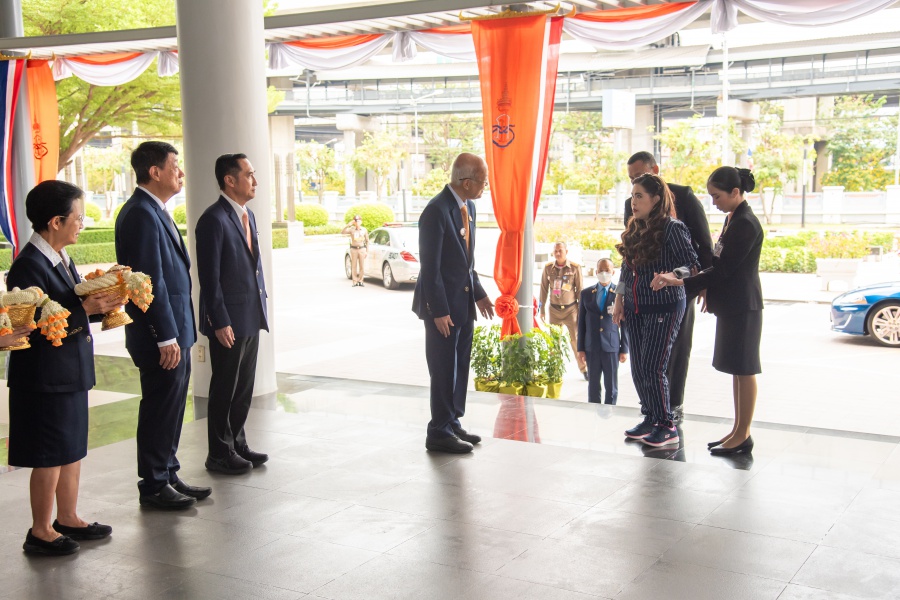 |
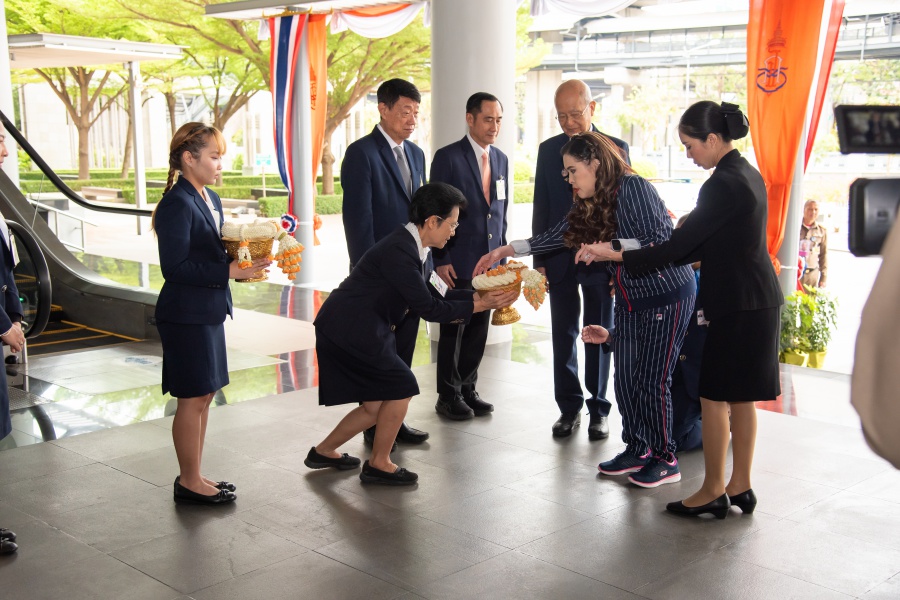 |
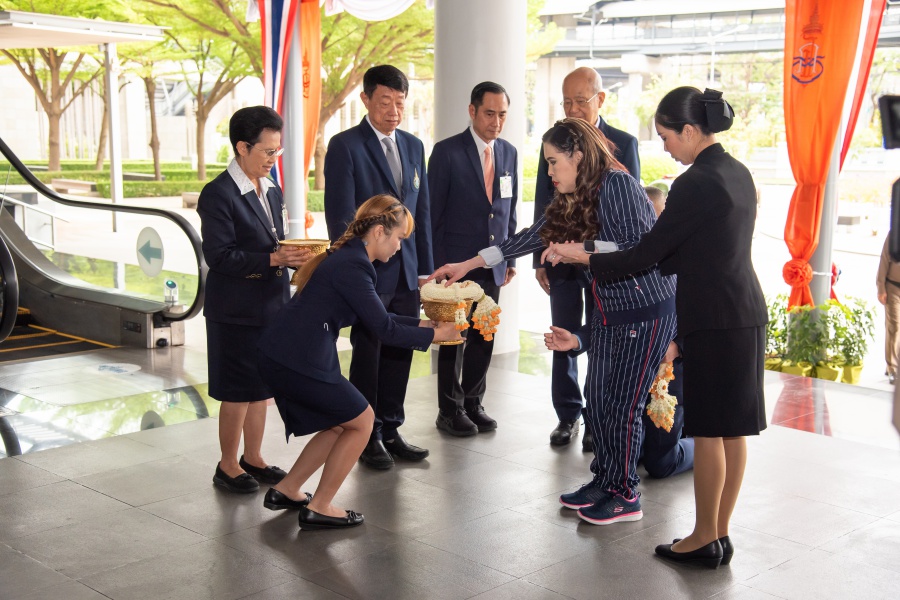 |
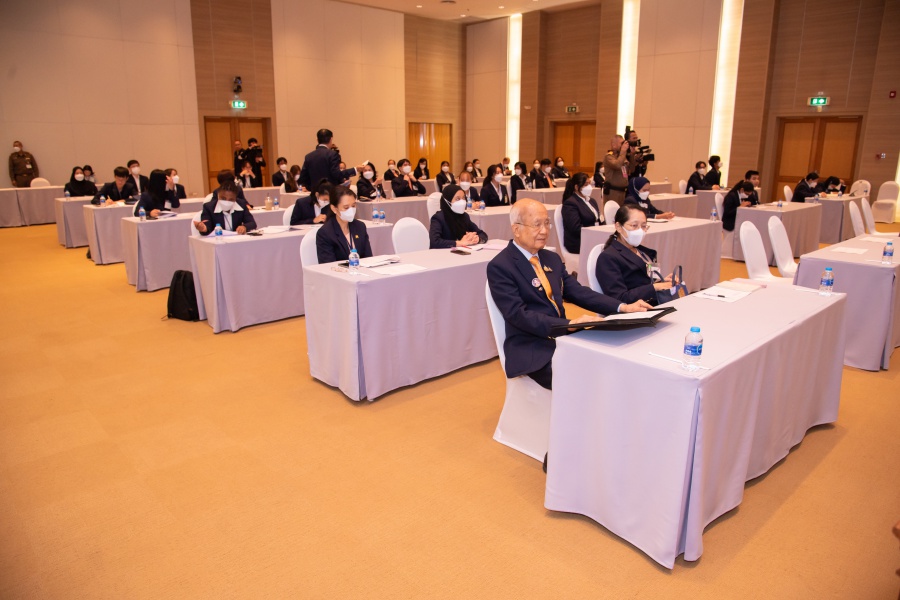 |
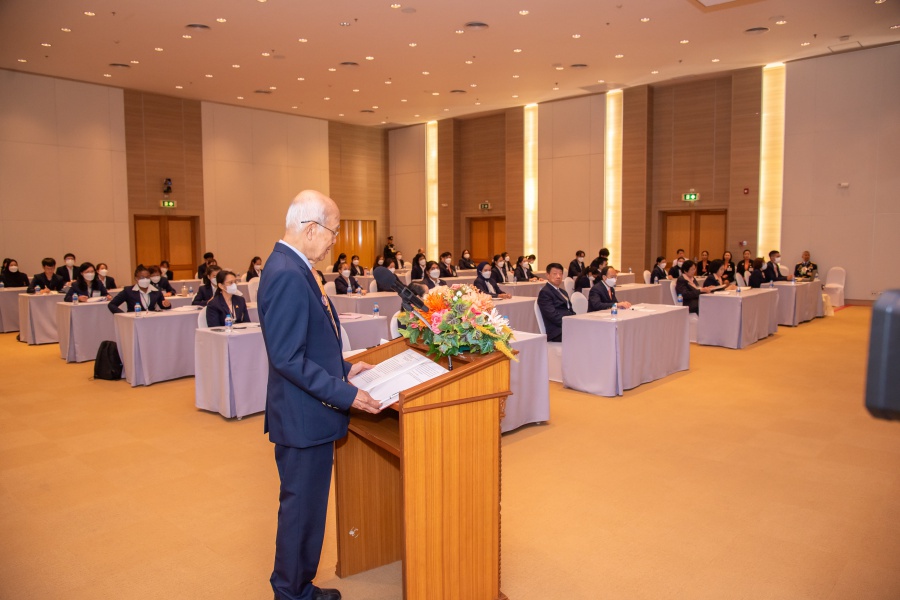 |
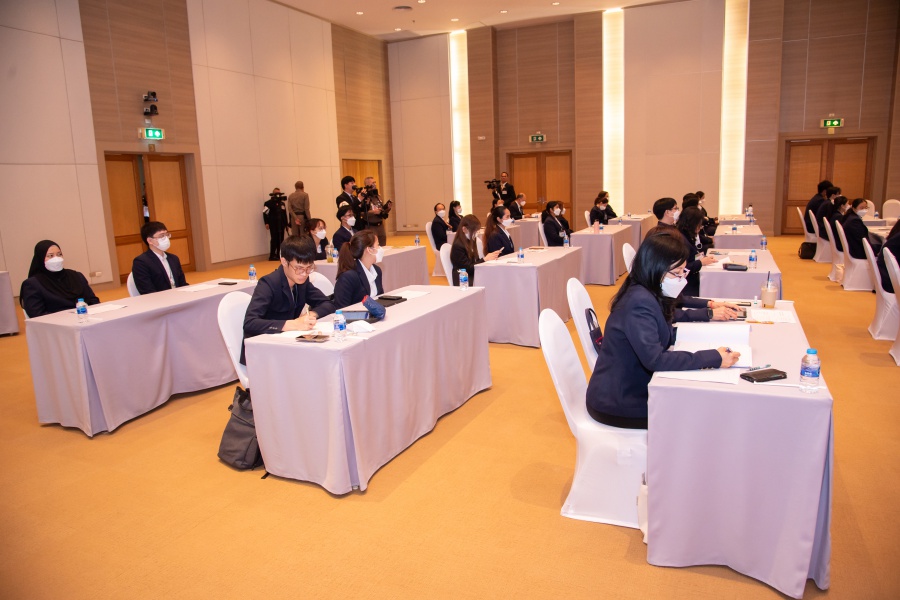 |
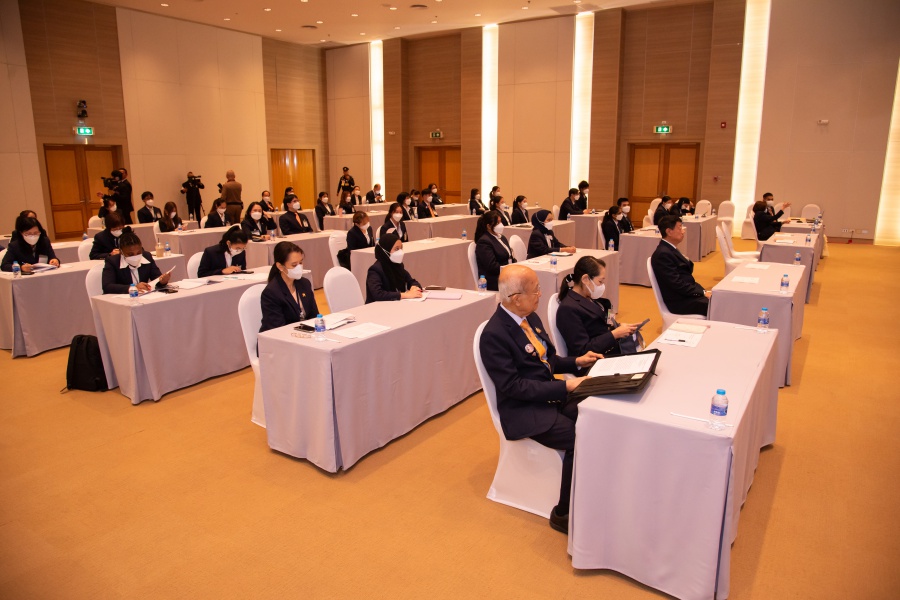 |
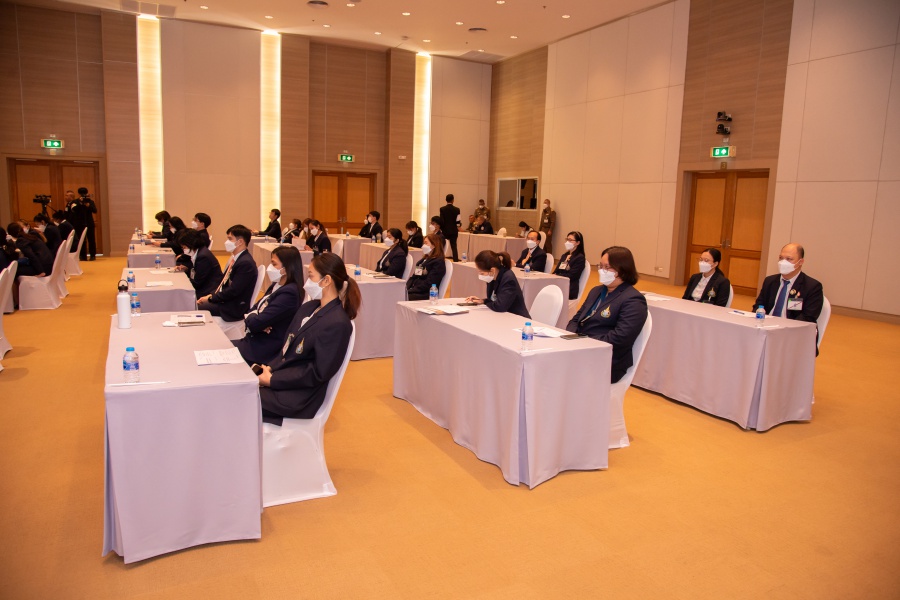 |
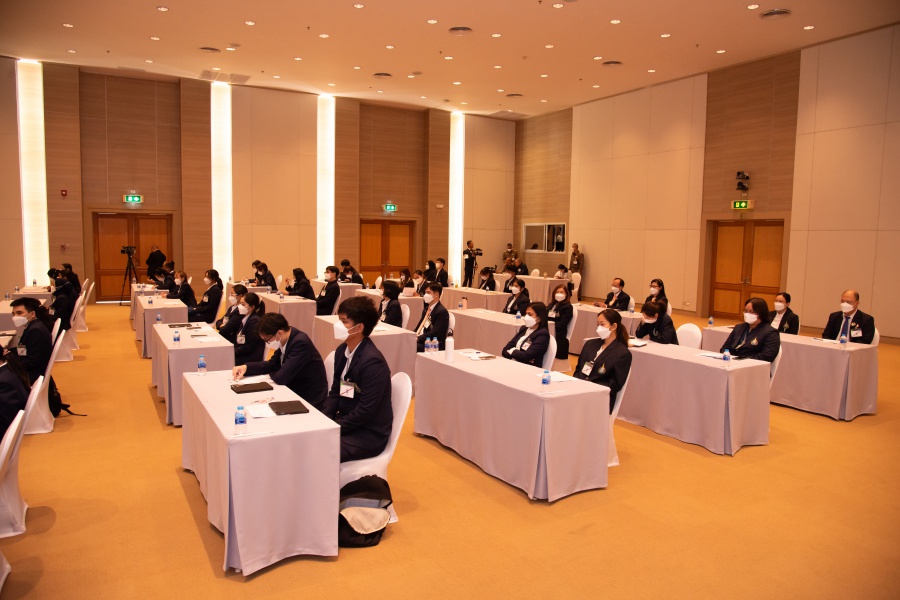 |
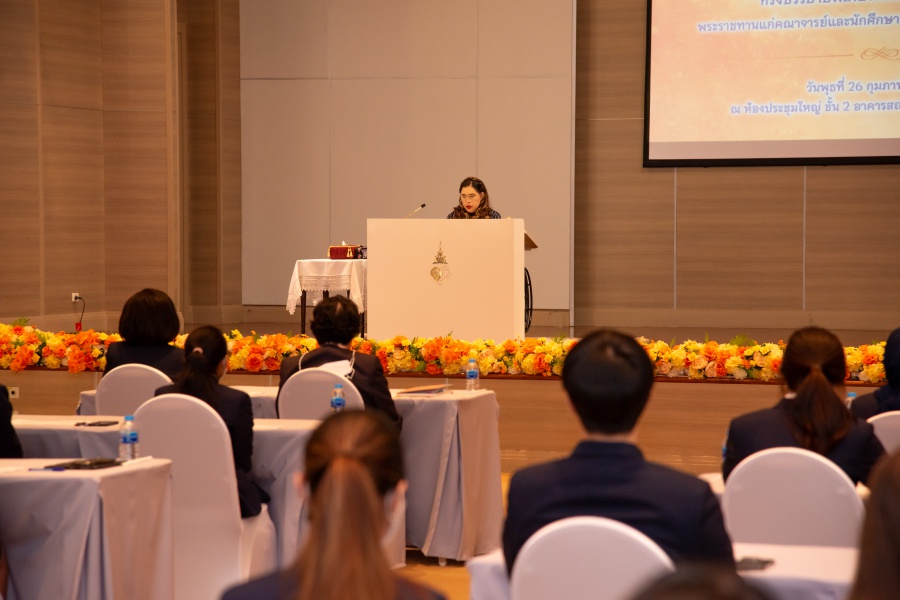 |
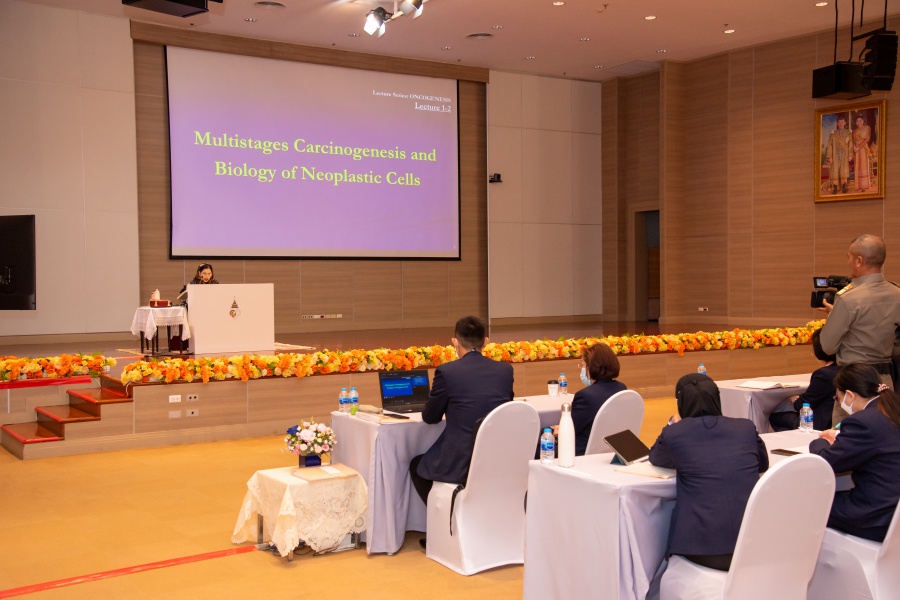 |
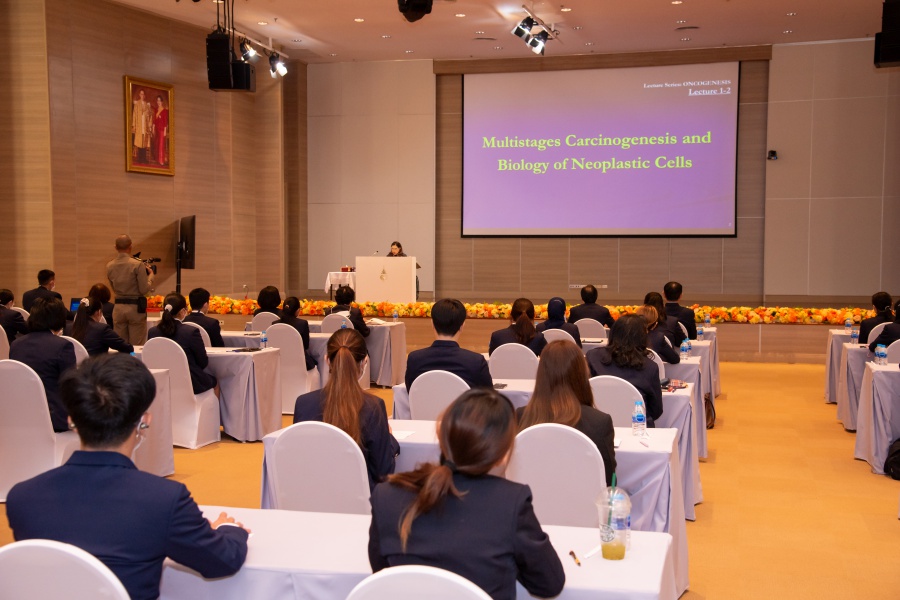 |
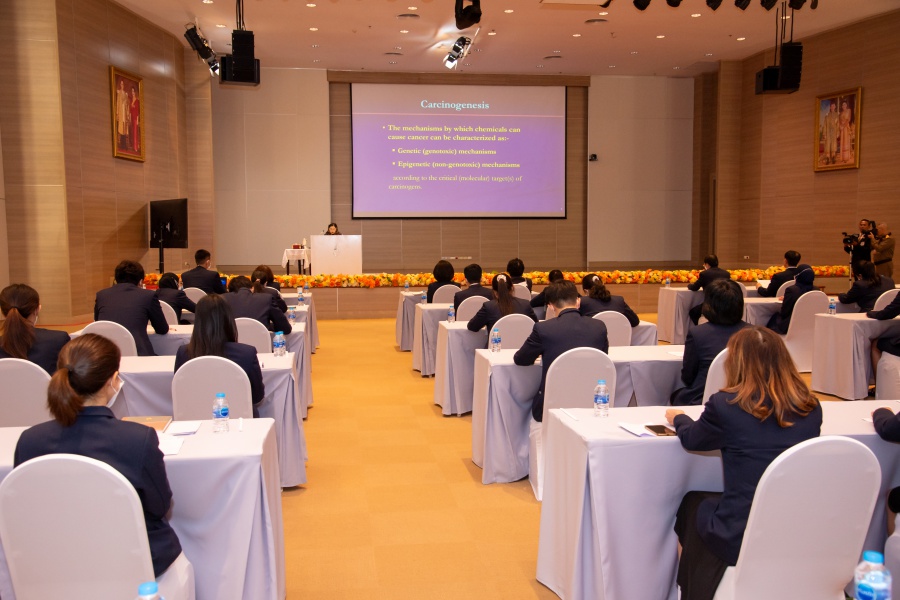 |
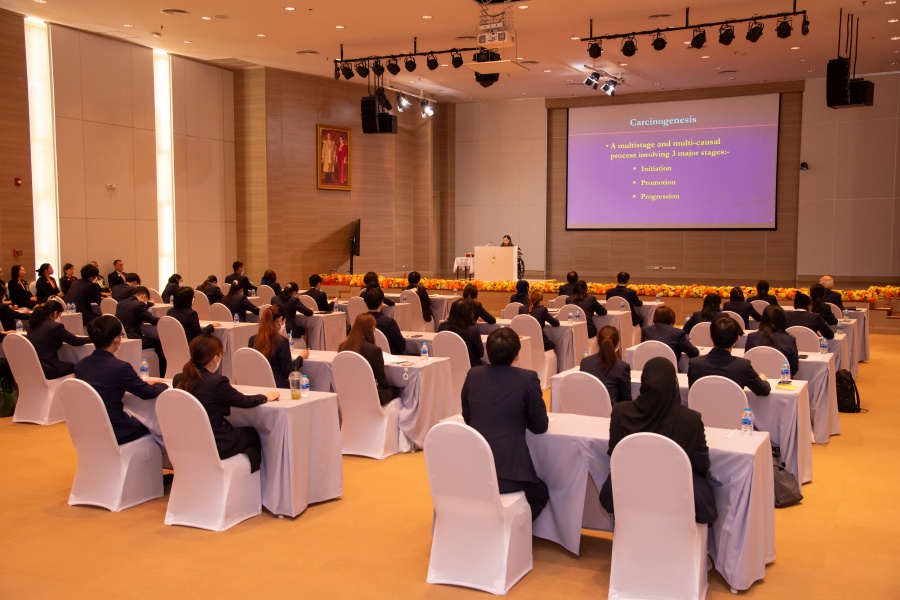 |

